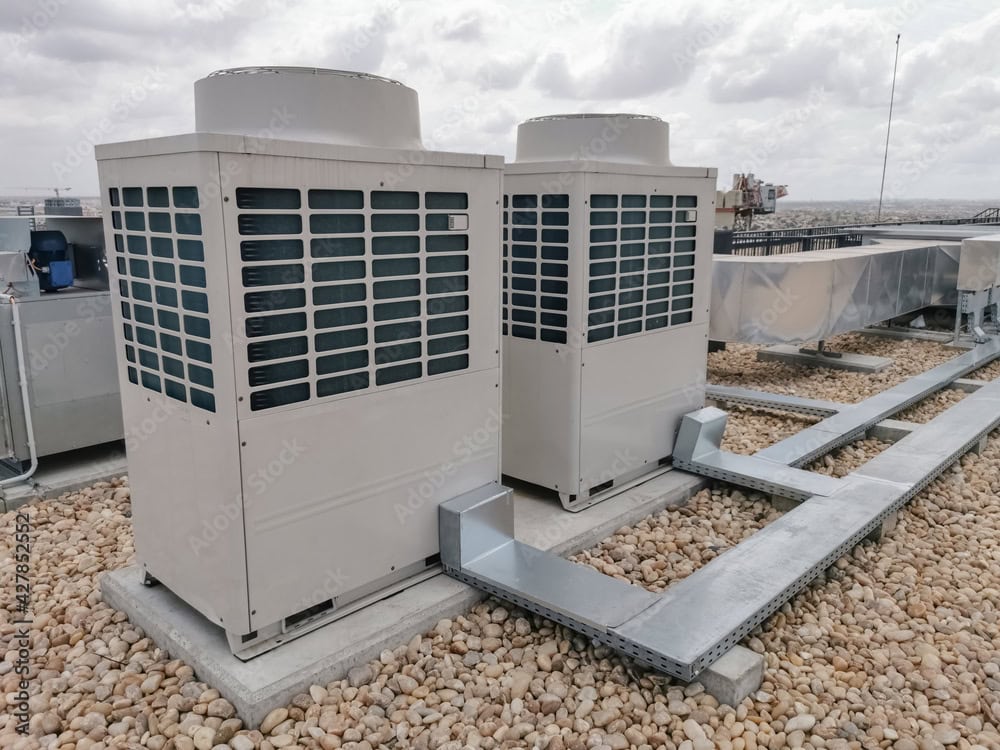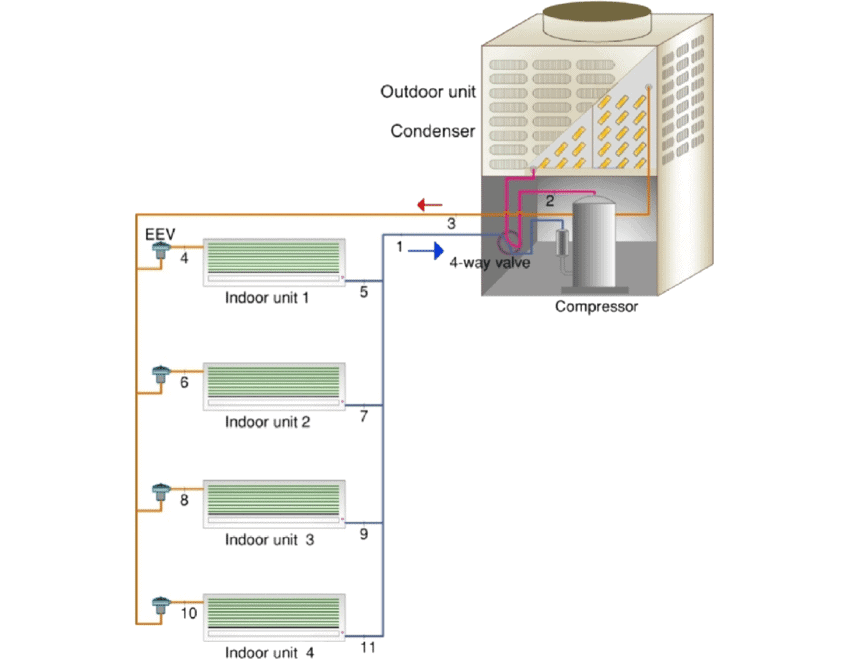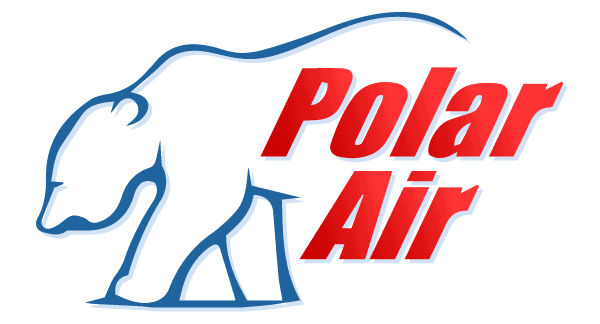What is a VRF System and How Does it Work?
A VRF system, which stands for Variable Refrigerant Flow, is a type of HVAC system that uses refrigerant to provide heating and cooling in different zones. Unlike traditional HVAC systems that rely on ducts to distribute air, VRF systems use refrigerant lines to deliver the desired temperature to each zone. This allows for individual temperature control and eliminates the need for ductwork.
The heart of a VRF system is the refrigerant. It circulates between the outdoor condensing unit and the indoor units, absorbing heat from the zones that need cooling and releasing it in the zones that need heating. The refrigerant flow is regulated by an inverter compressor, which adjusts the speed of the compressor to match the cooling or heating demand.

 Key Features of a VRF System
Key Features of a VRF System
One key feature of a VRF system is its ability to provide individual temperature control in different zones. With a VRF HVAC system, you can customize the temperature settings in each room or space according to your preferences. This zoning control allows for enhanced comfort and energy efficiency.
Another key feature of a VRF system is its variable refrigerant flow technology. This technology enables the system to adjust the amount of refrigerant flowing to each indoor unit based on the temperature requirements of the zone. By delivering the precise amount of refrigerant needed, the VRF system can optimize energy consumption and reduce wastage.
Additionally, VRF systems offer heat recovery. While traditional systems may require separate systems for heating and cooling, VRF systems can recover and redirect heat from one zone to another, maximizing energy usage. This feature is particularly useful in commercial buildings where different zones can have different heating and cooling needs at the same time.
VRF systems are known for their quick response and adaptability to outdoor conditions. The system can automatically adjust its operation based on factors such as outdoor temperature and occupancy, ensuring optimal comfort and energy savings.
Benefits of a VRF Air Conditioning System
- Variable Refrigerant Flow:
- Adjusts the amount of refrigerant flowing to indoor units based on the demand for heating or cooling.
- Individual Zone Control:
- Allows for independent control of temperature in different zones or rooms, providing personalized comfort.
- Energy Efficiency:
- Optimizes energy consumption by adjusting the refrigerant flow and capacity according to the actual heating or cooling requirements.
- Heat Recovery:
- Capable of recovering heat from areas that require cooling and redistributing it to spaces that need heating, improving overall system efficiency.
- Simultaneous Heating and Cooling:
- Can provide both heating and cooling simultaneously in different zones, enhancing comfort and efficiency.
- Advanced Controls and Automation:
- Utilizes sophisticated control systems for precise temperature management, scheduling, and integration with smart home or building automation systems.
Benefits of Using a VRF System
VRF systems provide significant energy savings compared to traditional HVAC systems. By utilizing advanced technology and variable speed compressors, these systems consume only the necessary amount of energy required to achieve the desired heating or cooling effect in each zone. This means that energy isn’t wasted on overcooling or overheating, resulting in lower utility bills and reduced environmental impact.
In addition to energy savings, VRF systems offer customizable comfort. Each indoor unit can be individually controlled, allowing occupants to set their preferred temperature in different zones. Whether you prefer a cool bedroom for a good night’s sleep or a warm and cozy living area, a VRF system can cater to your specific needs. This level of customization ensures that everyone in the space can enjoy optimal comfort, regardless of their individual temperature preferences.




CONTACT US
SCHEDULE YOUR HVAC SERVICE TODAY!
